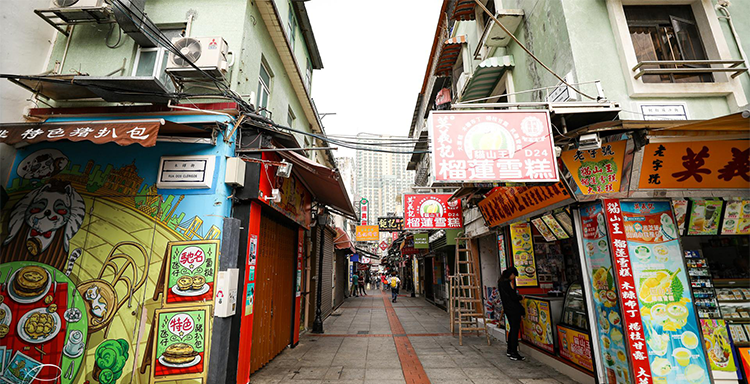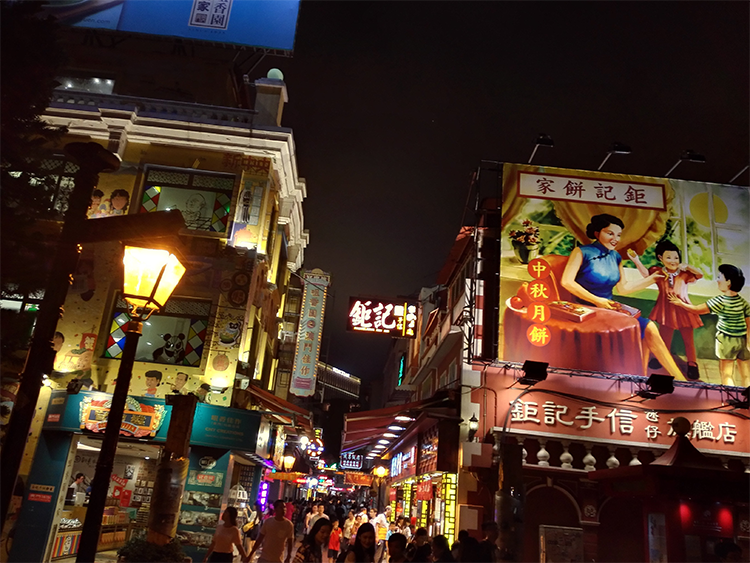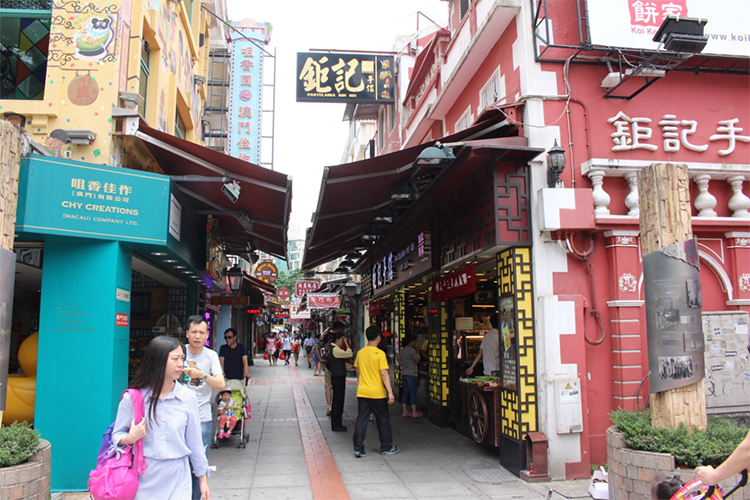Discover Rua do Cunha: Macau’s Best Portuguese Food Street
Stroll Rua do Cunha: Macau’s Portuguese Food Street
1. Introduction: A Timeless Culinary and Cultural Lane
Hidden in the bustling heart of Taipa Island, Macau, Rua do Cunha (Guan Ye Street) is a century-old lane bursting with southern European charm and authentic Macanese flavors. In just 120 meters you will find colorful Portuguese façades, cobbled pavements, famous pork chop buns, and serradura (sawdust pudding). It is a paradise for food lovers and a favorite spot for photographers. Wandering here feels like stepping into 19th-century Macau, where Mediterranean romance meets Cantonese everyday life.
Rua do Cunha is not only part of Macau’s heritage conservation area but is also known to visitors as Macau’s food museum. Whether you want to try traditional Portuguese dishes, pick up classic local snacks and souvenirs, or simply soak up the old-street atmosphere, this lane delivers.
2. Historical Background: From Portuguese Influence to Local Life
The street’s name comes from Costa Ferreira, a 19th-century Macau governor. Once one of Taipa’s earliest commercial centers, Rua do Cunha developed a distinct cluster of Portuguese-style buildings as Portuguese settlers made Taipa their home. Today the street still radiates southern European character:
– Colorful façades: pastel pinks, buttery yellows, and sky blues with white decorative window frames evoke a small Mediterranean town.
– Calçada Portuguesa: traditional Portuguese stone pavement that gives a Lisbon-like feel underfoot.
– Historic landmarks: nearby attractions such as Our Lady of Carmel Church (built in 1885) and Taipa Municipal Garden (Baroque features) are must-see cultural sites.

3. Architecture and Neighborhood Layout: A Fusion of Styles
Rua do Cunha may be short, but it holds many layers:
– Architectural style: typical Portuguese low-rise buildings with arched windows, iron balconies, and touches of Chinese arcade shopfronts create a distinct Macau fusion aesthetic.
– Street layout: the lane forms an L shape; the main stretch is lined with shops while side alleys hide artisan studios and secret food stalls.
– Best photo spots:
– Taipa Municipal Garden: Baroque gazebo and fountain ideal for photos.
– Our Lady of Carmel Church: crisp white façade glowing in sunlight.
– Colorful tile murals: some storefronts display Azulejo-style tile art rich in visual appeal.
4. Food Heaven: From Portuguese Classics to Macanese Snacks
The biggest draw of Rua do Cunha is its food. This compact street brings together authentic Portuguese cuisine, Cantonese snacks, and traditional souvenir shops — a true taste of Macau.
Must-try foods:
1) Portuguese dishes:
– Arroz de Pato (baked duck rice): rich, aromatic duck with rice.
– Bacalhau (salted cod): made Macau-style, fried or baked.
– Arroz de Marisco (seafood rice): fragrant and shareable.
– Recommended restaurants: Antonio Portuguese Restaurant (Michelin-recommended), Little Elephant Portuguese Restaurant.
2) Local Macanese snacks:
– Pork chop bun: crispy outside, tender pork inside a toasted bun. Lord Stow and Dali Lai Kei storefronts are famous on this lane.
– Serradura (sawdust pudding): creamy layers of whipped cream and crushed biscuits, melts in the mouth.
– Portuguese egg tart: flaky crust and silky custard; Andrew Bakery has a nearby outlet.
– Durian ice cream: try Musi Kee for Mao Shan Wang durian ice cream if you love durian.
3) Souvenirs and pastries:
– Koi Kee Bakery: almond cookies, peanut nougat, and meat jerky.
– Choi Heong Yuen: phoenix rolls and wife cakes.
– Wa Lok Bakery (century-old brand): chickie biscuits and wife cakes.

5. Leisure and Cultural Experiences: More Than Just Food
Beyond eating, Rua do Cunha offers varied cultural experiences:
– Taipa weekend market: local crafts and creative goods (weekend-only).
– Traditional costume rental: some shops rent Hanfu or Portuguese-style outfits for photos.
– Street music: weekend performers sometimes play Portuguese fado and other live music.
– Festivals:
– Lunar New Year: lion dances and red packet giveaways.
– Christmas: Portuguese-style lighting and a seasonal market.
6. Practical Tips
Basic information:
– Address: Rua do Cunha, Taipa Island, Macau
– Opening hours: the street is open all day; most shops 10:00–22:00
– Cost: free to visit; dining averages MOP 100–200 per person
Getting there:
– Bus: take lines 11, 15, 22, 28A, 30, 33, or 34 to the Rua do Cunha stop.
– Shuttle buses: many Peninsula hotels (e.g., Grand Lisboa, The Venetian) run direct shuttle services.
– Walking: about a 15-minute walk from The Venetian or Parisian hotels.
Traveler tips:
– Best times: before 10:00 AM or in the evening to avoid tour-group crowds.
– Payment: most shops accept Alipay/WeChat Pay; some traditional stores are cash-only (bring around MOP 500).
– Language: staff usually speak basic English; menus often have Chinese and English.
– Connectivity: Macau public Wi-Fi is available, but buying a local SIM is recommended.

7. Conclusion: A Must-Visit Macau Food and Culture Lane
Small but representative of Macau’s cultural fusion, Rua do Cunha is a top destination for food, photos, and history. Spend half a day to stroll, taste, shop, and soak up the atmosphere.
Travel quote:
In Rua do Cunha, every bite is history and every brick tells a story.
If you are planning a trip to Macau, make sure this charming Portuguese-flavored lane is on your list.


